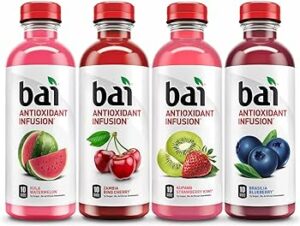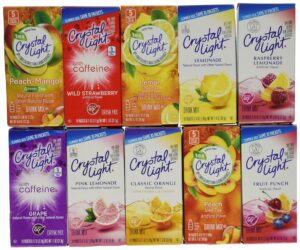Beyond the Hype: Why Quick-Fix Diets Don’t Work and What to Do Instead
In today’s fast-paced world, quick results are often more appealing than the slow and steady approach, especially when it comes to weight loss. Social media platforms are flooded with influencers promoting the latest fad diets that promise significant weight loss in just days or weeks. But how effective are these diets? This blog explores the truth behind rapid weight loss solutions and offers a sustainable alternative for long-term health.
The Lure of Social Media Trends:
Every day, new diets trend on social media, each accompanied by glamorous photos and testimonials about miraculous transformations. From juice cleanses to the military diet, these regimens often go viral, promising to help followers lose weight quickly without much effort. However, these trends rarely discuss the potential risks or the unsustainability of such extreme dietary changes.
Example of a Popular Fad:
Consider the example of the “Cabbage Soup Diet,” heavily promoted online as a way to lose up to 10 pounds in a week by consuming almost exclusively homemade cabbage soup. While some may experience initial weight loss, primarily from water and muscle mass, the diet is nutritionally imbalanced and unsustainable.
The Reality of Quick-Fix Diets:
These diets often lead to short-term weight loss that is difficult to maintain. Here’s why:
1. Nutritional Deficiencies:
Most rapid weight loss diets are not nutritionally complete. Diets that require you to drastically cut calories or eliminate whole food groups can lead to significant deficiencies in vital nutrients, negatively impacting overall health.
2. Metabolic Slowdown:
Severely restricting calories can cause your metabolism to slow down as your body tries to conserve energy. This makes it increasingly difficult to lose weight over time and easy to regain weight once you resume a normal diet.
3. Psychological Effects:
The cycle of rapid weight loss followed by rapid weight gain can lead to disordered eating patterns and a negative body image. It’s common for individuals to feel like failures when they can’t maintain their diet or regain weight, which can harm mental health.
Let’s hear from Emily, a 34-year-old who decided to try a rapid weight loss program she found on Instagram, promising to shed 15 pounds in just three weeks. Initially, Emily noticed a quick drop in her weight, but soon she started experiencing fatigue, dizziness, and a general feeling of weakness. Despite losing the promised weight, Emily found herself unable to enjoy her slimmer figure due to her depleted energy levels and poor health. Her experience is a stark reminder of the dangers of extreme dieting.
"I followed a diet I saw on social media, hoping for quick weight loss. At first, the numbers on the scale dropping quickly made me feel successful, but the side effects soon followed. My hair started falling out, I had painful cramps, and constant aches that made every day difficult. It was supposed to make me feel better about myself, but instead, I felt weak and unhealthy. That experience taught me the hard way that true health isn't about rapid changes but nurturing your body with what it truly needs over time."
Building a Sustainable Approach:
Instead of succumbing to the allure of quick fixes, focus on making gradual lifestyle changes that you can maintain long-term.
1. Emphasize Nutritional Balance:
Aim for a diet rich in various nutrients, including carbohydrates, proteins, and fats from diverse sources. Ensure you’re getting enough vitamins and minerals by eating a wide range of fruits, vegetables, whole grains, and lean proteins.
2. Incorporate Regular Physical Activity:
Exercise is a crucial component of sustainable weight management and overall health. Find activities you enjoy, such as walking, cycling, swimming, or yoga, and make them part of your routine.
3. Foster Mindful Eating:
Pay attention to your hunger cues and try to eat in a calm, undistracted environment. Mindful eating can help you enjoy your food more and prevent overeating.
While the promise of quick weight loss might be tempting, the risks and downsides are significant. By adopting a more balanced and sustainable approach to eating and exercise, you can achieve better health results that last a lifetime, beyond just shedding pounds.
Tired of the diet rollercoaster? Discover a truly sustainable approach to weight loss with Seriously Simple Steps (S3). Join our community for ongoing support and advice tailored to creating lasting lifestyle changes. Embrace the S3 method and step confidently towards your health goals, one simple step at a time. Subscribe to our newsletter and start your journey with us today!
Medical Disclaimer
The content of this website is provided for general informational purposes only and is not intended as, nor should it be considered a substitute for, professional medical advice. Do not use the information on this website for diagnosing or treating any medical or health condition. If you have or suspect a medical problem, promptly contact your professional healthcare provider.
Healthy Tips and Tricks Delivered to your Inbox
Enter your email below and I’ll send you delicious recipes, articles, and tips to get control of your health and simple steps to maintain it.

Dr. Kulka
Dr. Kulka is a board-certified family medicine physician with 20 years of clinical experience. Placing an emphasis on improving wellness and avoiding illness, Dr. Kulka has a passion for educating people about their health, weight loss options, and specific medical concerns in an easy-to-understand way.
If you, like so many people, struggle to be consistent with your healthy diet and exercise routine, or feel overwhelmed and unsure where to start on your journey to a healthier lifestyle, check out our Seriously Simple Steps to Health and Wellness program.


















